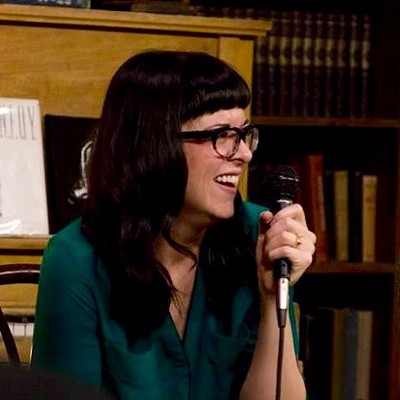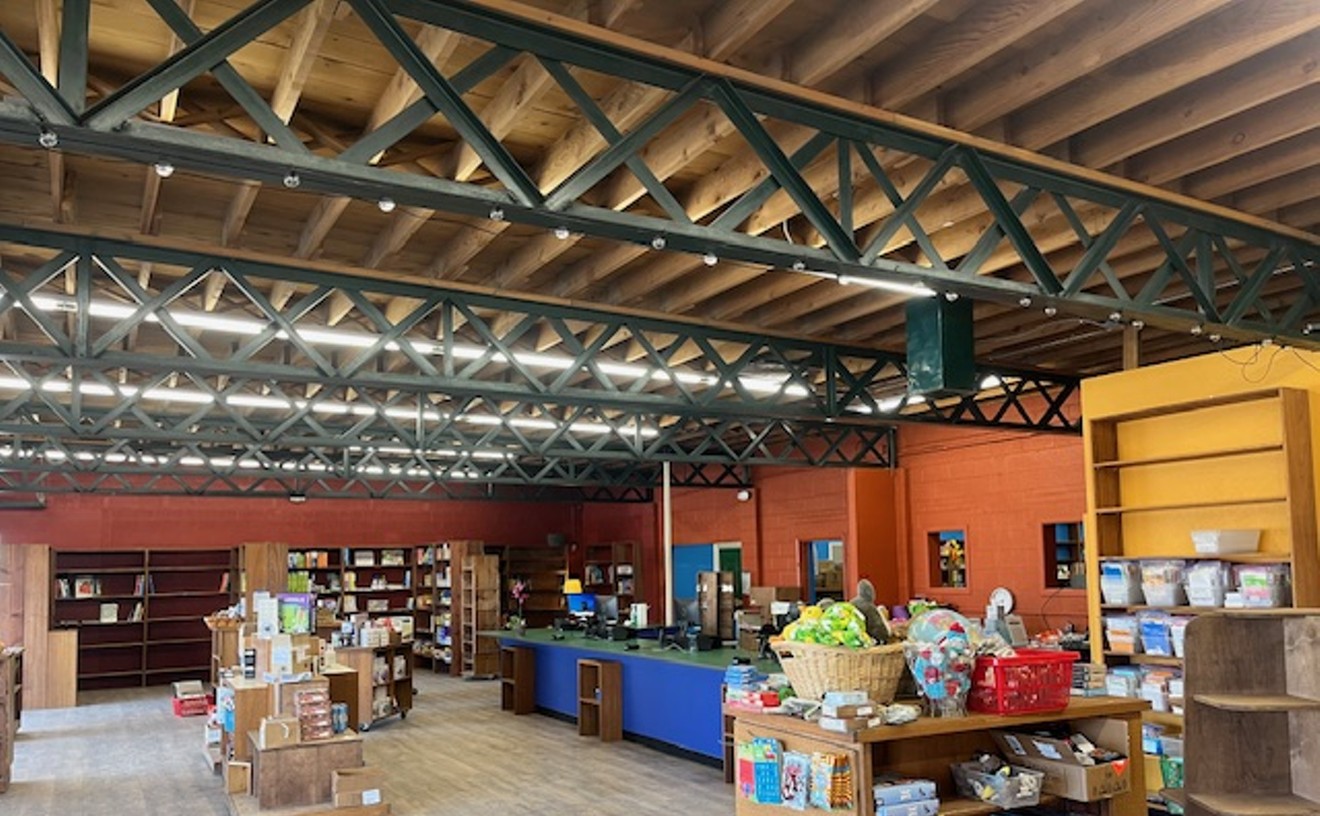The Denver Eye has closed. The popular Facebook page that brightened newsfeeds every day with fresh images of vintage Denver and the West has gone dark — at least for now. Tom Lundin — collector, curator and operator of the colorful page of Colorado ephemera — gave notice to thousands of Facebook fans on Thursday, May 12. "I've been doing this for years and it is time to move on," Lundin said in a short post. "I will still be doing research and *hoarding* old '50s-'60s Denver imagery, but I would like to drastically reduce the amount of time spent with Facebook or blogs."
I interviewed Lundin two years ago after first discovering the Denver Eye and instantly becoming obsessed with his constantly updating stash of retro photographs, postcards, newspaper clippings, restaurant menus and so much more. While Denver was his focus, Lundin's growing collection was a great survey of the last hundred years of Colorado's life. So when I heard that he was not going to close this magnificent — and often emotional — portal into the Queen City's past, I had to call him and find out why.
"I want to do different stuff," Lundin said plainly over the phone as he took a puff from his tobacco pipe (he noted that it was in fact, tobacco, and not weed that he was smoking). "I spend a lot of hours on the Denver Eye, and I'd really like to do some more serious projects." Those serious projects are still very much in the vein of what he was sharing via his Facebook page; he likes architecture and the history of it. But he wants to focus his time on his own drawings of long-gone Denver mid-century-modern structures and take photographs of still-standing works of commercial art.
True mid-century-modern architecture — from the ’50s and ’60s, Lundin notes, not some of the new stuff that's being passed off as mid-century — is his passion. He says he's looking forward to working on projects with his wife, Shannon Stanbro, a real-estate agent who specializes in homes from the ’30s through the ’70s in Denver. They have a shared affection for good design and are interested in documenting what "true historic modernism" looks like in Denver, Lundin adds.
What started as the Denver Eye website eventually migrated to a regularly updating Facebook page. The communal aspect seemed to serve his fans, many of whom grew up in Denver and often regaled other users with their own memories of the Mile High in the comments sections of Lundin's posts.
But finally, Lundin ran through his stockpile — from the postcards and newspapers purchased on eBay to the detailed photographs and architectural models he was able to get his hands on through the Denver Public Library's physical and digital collections. He says he just didn't have anything more to post. Still, the collector recommends that anyone can and should take advantage of the Denver Public Library and History Colorado's massive databases of imagery for themselves: There are still hundreds of thousands of accessible artifacts out there, he promises. "Early on, the Denver Public Library established a really smart approach. The photos are done in high definition," Lundin says of DPL's scanned inventory. "If you look at a photo of a city scene, you can zoom in on a shop window and see what the signs say. It is so fascinating." Denver is lucky to have one of the most organized, clearly labeled and easily searchable databases of photographs and images in the country, he adds.
Lundin says he spent a few hours every morning Photoshopping and perfecting the images he posted to the Denver Eye page — a process he enjoyed. Eventually, though, he grew tired of people stealing the photos and not crediting him (or the library — something Lundin was diligent about doing on any photo he used from its database). The theft of his work is another reason that the website and Facebook page have been completely shut down and are no longer reachable by anyone on the Internet. "I spend a lot of time on those images; often there is just dirt on the photos or they are warped," he explains. "Even the original photos, before damage, often aren't that good, and sometimes I can fix that. I didn't want to sit around and police the page as people were grabbing photos right and left; it's kind of a drag."
But Lundin isn't by any means soured on the project. Through his detailed research for the Denver Eye, he's discovered that one of his favorite mid-century-modern architects, Richard Crowther, designed dozens of commercial structures across the city — many more than he ever knew existed. "I've been going through and looking at a lot of blueprints; I can't believe the amount of buildings all over the city that Richard Crowther did," Lundin says. "He did coffee shops up and down Colfax and, of course, the art-deco work at Lakeside, and then later, he became a very important passive solar architect. He designed some of the White Spots around Denver, which I didn't know about, and lot of his buildings are still in Cherry Creek. You can tell which ones they are because they have these giant, weird windows."
Lundin is enjoying the free time he now has to do more thorough research on buildings, conceiving his own versions of the classic structures that once defined Denver a half a century ago. He's been working on three-dimensional renderings of some beloved structures, going off of blueprints and photographs to help him fill out the illustrations. One such spot is the Tropics, a nightclub at 4842 Morrison Road in Westwood that was designed by Crowther. It still stands today as the Stone nightclub, but in a drastically mutated form from its original, simple mid-century beauty.
The Denver Eye is gone, but not forgotten. Before Lundin closed the Facebook page, he allowed me to comb through his posts and snag some of my favorite images from the collection. Please enjoy the photographs and other fine relics of Colorado included in this post, and cross your fingers that Lundin surfaces again soon with more fun stuff for us to pore over.
Be my voyeur (or better yet, let me stalk you) on Twitter: @cocodavies
[
{
"name": "Air - MediumRectangle - Inline Content - Mobile Display Size",
"component": "12017618",
"insertPoint": "2",
"requiredCountToDisplay": "2"
},{
"name": "Editor Picks",
"component": "17242653",
"insertPoint": "4",
"requiredCountToDisplay": "1"
},{
"name": "Inline Links",
"component": "18838239",
"insertPoint": "8th",
"startingPoint": 8,
"requiredCountToDisplay": "7",
"maxInsertions": 25
},{
"name": "Air - MediumRectangle - Combo - Inline Content",
"component": "17261320",
"insertPoint": "8th",
"startingPoint": 8,
"requiredCountToDisplay": "7",
"maxInsertions": 25
},{
"name": "Inline Links",
"component": "18838239",
"insertPoint": "8th",
"startingPoint": 12,
"requiredCountToDisplay": "11",
"maxInsertions": 25
},{
"name": "Air - Leaderboard Tower - Combo - Inline Content",
"component": "17261321",
"insertPoint": "8th",
"startingPoint": 12,
"requiredCountToDisplay": "11",
"maxInsertions": 25
}
]











